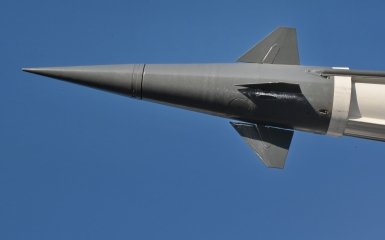The missiles and drones that Russia uses for daily attacks on peaceful Ukrainian towns and villages contain components made in more than 20 countries.
Points of attention
- Russian missiles and drones attacking Ukraine are assembled with components from more than 20 countries worldwide, including the USA, China, and Germany.
- The Kyiv Research Institute of Forensic Examinations found a variety of foreign components in missiles like Iskander, Dagger, and drones like Shaheed-136, Shaheed-121 used by Russia against Ukraine.
- The use of dual-purpose electronic components in weapons, imported despite sanctions, highlights the challenge of regulating the supply chain for military technology.
- American chips like Field Programmable Gate Array (FPGA) from companies like Advanced Micro Devices and Intel have been found in Russian missiles, indicating a complex network of technology sourcing.
- China has emerged as a major supplier of microcircuits to Russia, reflecting the global nature of the semiconductor industry and the challenges in monitoring the flow of critical technologies for military applications.
Russian missiles and drones have Western-made parts
Our experts find foreign components in the missiles with which Russia attacks Ukraine. The missiles and drones that Russia uses for daily attacks on peaceful Ukrainian cities and towns contain foreign components produced in more than 20 countries around the world. These are China, Germany, Japan, Netherlands, Switzerland, Taiwan, USA, Canada, Iran, etc.
This was reported by the deputy director of the Kyiv Research Institute of Forensic Examinations of the Ministry of Justice, Nataliya Nestor.
Nestor noted that in 2023, the experts of the Kyiv Scientific Research Institute of Forensic Examinations of the Ministry of Justice conducted about 30,000 studies related to the facts of Russia's military aggression against Ukraine.
According to her, KNDISE experts study almost all types of Russian missiles (Iskander, Dagger, Kalibr, Kh-101, Kh-55, Kh-59, etc.) that Russia launches over Ukraine. In addition, the objects of research are unmanned aerial vehicles such as Shaheed-136, Shaheed-121, as well as reconnaissance drones — "Kartograf", "Orlan-10", Supercam.
So, for example, in Shakhed these are servo drives, processors, switches, generators from the USA, contact tips from Iran, spark plugs, indicators from China, electric fuel pumps from Germany and Great Britain, oil seals from Taiwan, Schottky modules from South Korea, etc. . In the Kinzhal missile, these are sensors from Spain, buffers, diodes, transceivers, converters from the USA, flash memory from Taiwan, filters from Japan, relays from Germany, converters from Switzerland, etc.

This means that all missiles and drones, their main high-tech component, without which they could not exist, are not produced in Russia, but in other countries. We are talking about components of navigation, control, guidance systems, microcircuits, various chips, sensors, boards, etc.
Nestor said that most electronic components do not have an exclusive purpose for weapons.
There are dual-purpose parts that are also used in everyday life. In washing machines, computer technology, networking, etc. Such goods are imported for one use, and in the end they are made into weapons. Rockets of the same type do not have the same set of components in specific systems. They proceed from what they have, what they were able to bring to the Russian Federation.
Microchips from the Dutch companies NXP and Nexperia also continue to reach Russia, despite the sanctions. NXP and Nexperia products were found in Shahed-136, ZALA, PTERO, Eleron-3SV, Kub, Orlan-10, Takhion, Geran-2, X-101, Iskander OTRK UAVs.
The Kh-101 missile that Russia used to hit Okhmatdyt had an American chip
One of the important elements of the rocket was the Field Programmable Gate Array, or FPGA, chip, produced by American companies such as Advanced Micro Devices and Intel.
This chip is used in fire alarms, internet modems, missiles and drones for lightning fast data processing and is prohibited for sale in Russia.
Since the start of the war, Russia has imported more than $390 million worth of FPGAs, according to Russian customs. These deliveries are just one component of the Kremlin's efforts to circumvent sanctions and preserve supplies of critical technologies.
China has become the dominant supplier of microcircuits to Russia. According to the Semiconductor Industry Alliance, 29% of all semiconductors pass through China. FPGA chips are arriving in huge quantities to Chinese manufacturers, who are putting them into products sold around the world.

